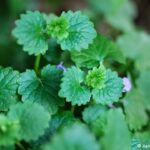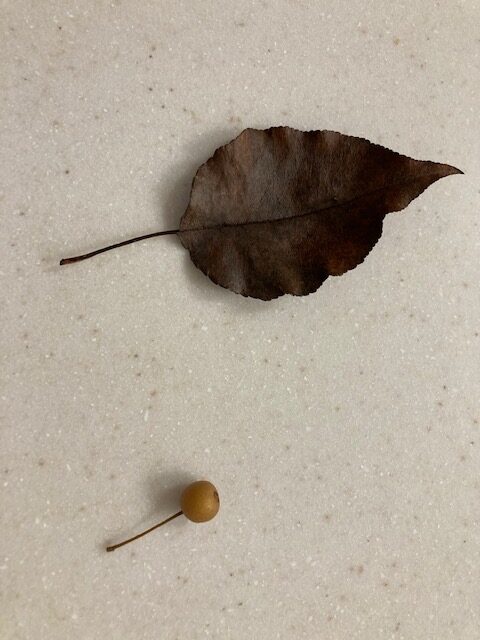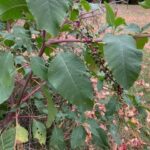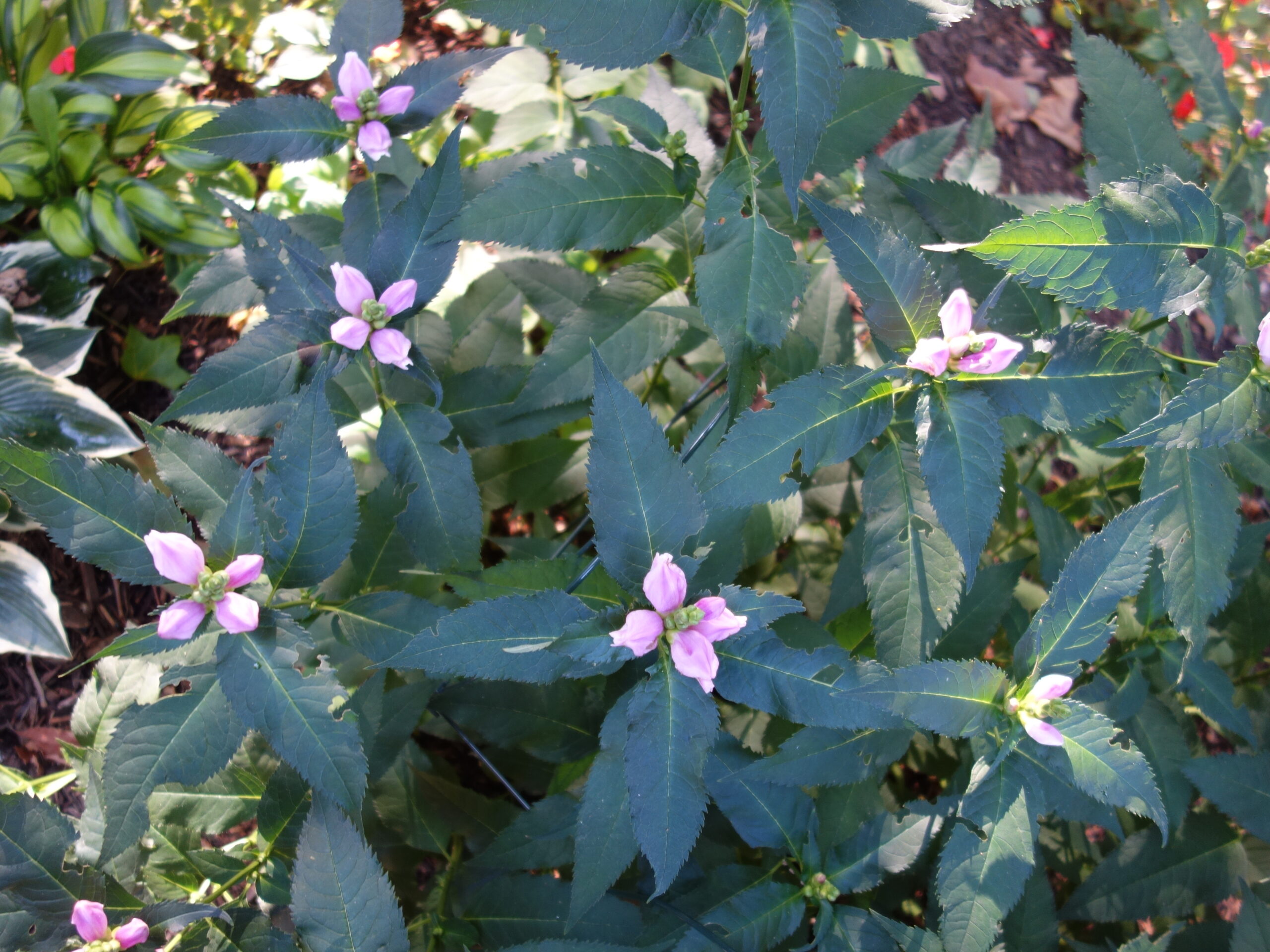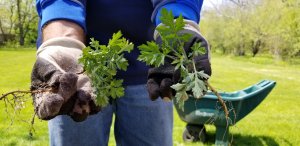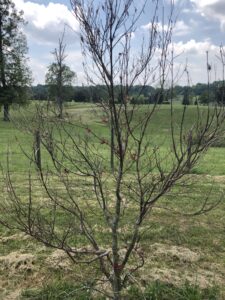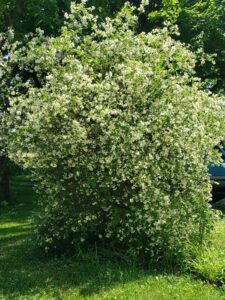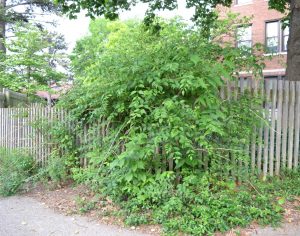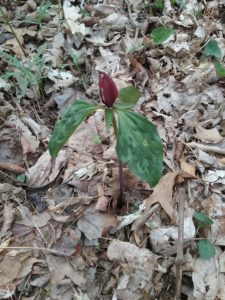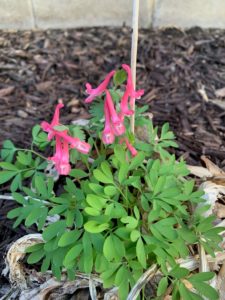In the Grow (Q & A)
The following question and answer columns are currently written by B. Rosie Lerner, Purdue Consumer Horticulture Extension Specialist and are distributed to news media around the state by the Purdue University Agricultural Communications. Columns from June 1995 - January 2006 were authored by Bev Shaw, Advanced Master Gardener.
Creeping Charlie in the Garden
Creeping Charlie has square stems with opposite leaves. Photo Credit: Dr. Aaron Patton, Purdue University Q: I can control creeping charlie in my yard. How can I safely control/stop creeping charlie in the garden? A:I share this never-ending challenge to keep creeping Charlie (also known as ground ivy) out of my garden beds. Creeping Charlie is an herbaceous perennial that spreads by seed as well as horizontal, above-ground stems called stolons or runners. These runners […]
Mystery leaf identified!
Callery pear leaf and fruit. Q: I would like identification of the two leaf samples enclosed. I think the photo showing just a leaf is a sweetbay magnolia. The other I don’t know. It has some sort of fruit on it and a sample is next to the leaf. Thank you so much! – G.H., Columbus, Indiana A: The photo showing the leaf with a fruit is Callery pear (sometimes called ornamental pear). They used […]
Pokeweed is on the low end of the toxicity scale
Q: I have a lot of these plants growing in the field near my home. Can you identify this plant for me? And is it poisonous? I have horses and am concerned that this could make them sick. A: This is a very common weed called pokeweed. It is native to much of Eastern North America, including Indiana. All parts of the pokeweed plant are poisonous, especially roots and seeds, but its toxicity is generally […]
Bees, butterflies like turtlehead flowers
Q: I have a question about a perennial in our garden. Can you identify the plant in the attached photos, taken just a few weeks ago? – R.S., Indianapolis Photo provided by R.S., Indianapolis Photo provided by R.S., Indianapolis A: The plant in your photos is the native perennial called turtlehead, known botanically as Chelone. There are a few different species in commerce, including C. lyonii and C. obliqua, both with pink to purplish pink […]
Mugwort, wormwood – by either name, a real problem
Q. I am curious if you have an idea about a weed that grows in our yard every year. It spreads very rapidly, seems invasive and grows to a pretty high level as summer goes along. We have asked many people, and they are quite stumped. My wife does not like it, and we pull it and spray it, but it just keeps coming back, spreading and invading. Also, it seems to transplant to other […]
Tree care from freeze to slime
Q: Our Japanese red maple tree was full of new leaves when the hard freeze hit. It is just now getting a few leaves again. Should I trim the tree back, or just wait and see what happens? I do not know how much is dead or how much will produce new growth. – A.K., Harrison County A: It’s easy to check the twigs for live tissue. If twigs appear to be dead, scrape away […]
Mock orange stumps knowledgeable pair
Q: My mother taught me everything there is to know about plants and trees and how to take care of them properly. She is a walking encyclopedia of the outdoors. While visiting her yesterday I saw a flowering bush in her yard. Normally, if one of us doesn’t know what a flower is, the other one will. We are stumped. The bush in question has a very lilac look to it. Multiple, thick, sturdy […]
Trumpet creeper is no shrinking violet
Q: I have a trumpet creeper that is more than 5 years old. It is planted at the front of our house which faces east. The vine grows rather hardy but never enormous, as the material I’ve read about this vine indicates. I am wondering whether to move it or just destroy it. Since I’ve researched it and learned that it can be very invasive, I’m wondering if I should just get rid of it. […]
In The Grow
Q: We found a plant in our woods about a week ago, and I wondered if you could identify what it is? – R.B. via email A: That is one of my all-time favorite woodland wildflowers, the trillium. There are numerous species of Trillium. I believe yours is the prairie trillium, known botanically as Trillium recurvatum. Despite the common name, prairie trillium is native to woodland habitats rather than open prairie. Some members of this […]
Friend supplied more than hosta
Q: A friend gave me some starts of hosta last year, and where I planted them, this lovely surprise came up early this spring. I did not plant this so I’m guessing this came as a bonus with the hostas from my friend. Can you identify? – T.C., Tippecanoe County A: What a great bonus! This appears to be Corydalis solida, (common name fumewort) most likely the cultivar ‘Beth Evans’. Fumewort is a spring ephemeral, […]
